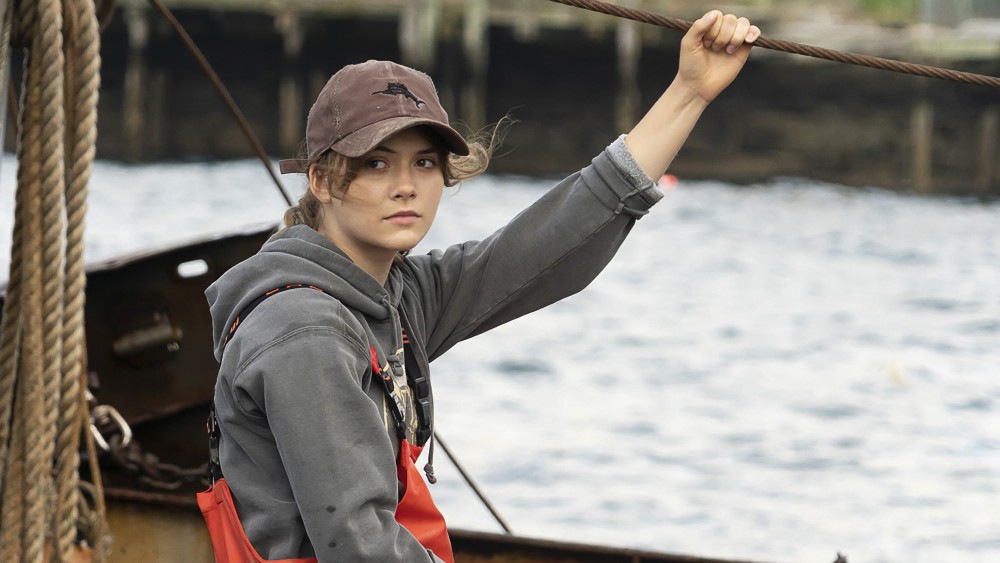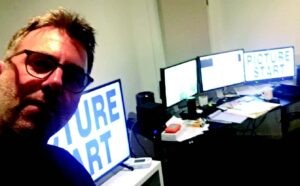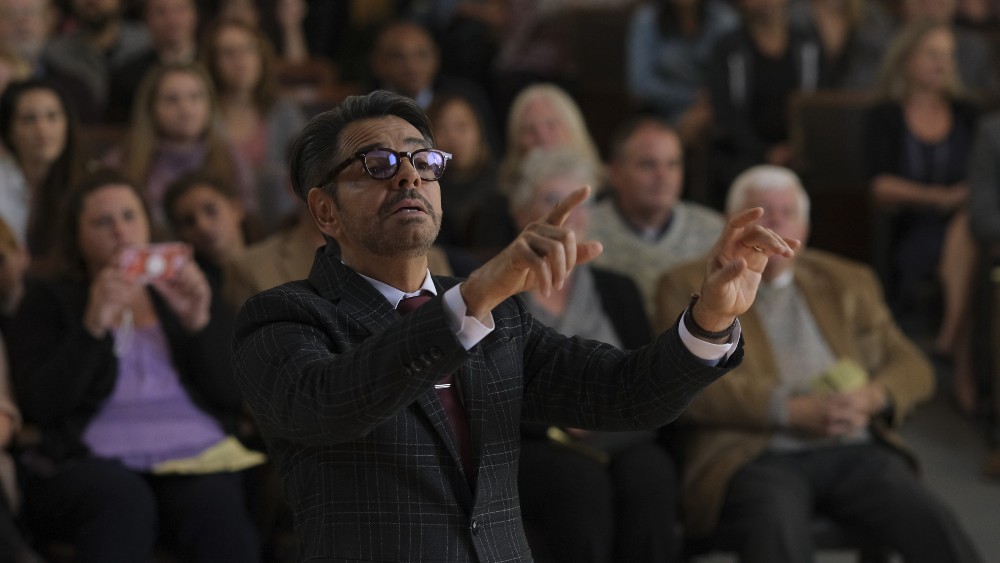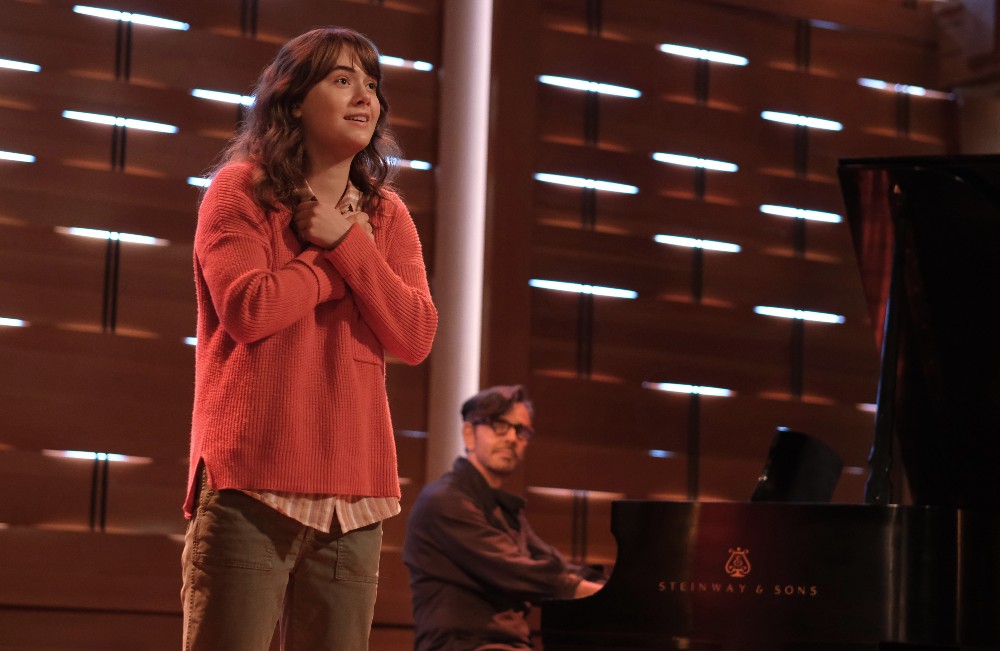
Siân Heder’s CODA — an acronym for “Child of Deaf Adults” — based on 2014 French film La Famille Bélier, tells the story of Ruby (Emilia Jones). She is the only hearing person in her family and plans to join her family’s fishing business after high school. However, these plans change when she joins the school’s choir, and with the encouragement of her music teacher Mr. V (Eugenio Derbez), Ruby decides to audition for the Berklee College of Music in Boston, Mass.
Editor Geraud Brisson previously worked with Ms. Heder on her Apple TV+ series, Little America, so it made sense for him to come on board to edit CODA. Previously, he edited the SundanceTV series, This Close, and other television series.
In an interview held a few weeks back, Brisson told Below the Line about his editing process, and how he prefers working off the dailies. He finds that it is beneficial to the production in cases where they might be losing a location soon. Because of Brisson’s process of starting as soon as footage started getting turned over, he was able to have a rough cut “less than a week after production wrapped.”

Below the Line: How did you first get interested in becoming an editor?
Geraud Brisson: For the longest time, I didn’t know what I wanted to do. One, I always loved films, but I think I was more of a cinephile than I necessarily wanted to work in film. I happened to, at some point, get involved with a short film and started editing. That was the first time that I knew what I wanted to do. After that, I went to film school, even though I went to a school where I had to learn a little of everything. I directed some shorts, did some writing, and did some sound editing and cinematography—but all that in mind that I wanted it to be an editor, and, hopefully I’d be an editor. But yeah, that’s how. It’s a little bit like a finding.
BTL: What would you say is the most valuable lesson you learned in film school?
Brisson: I don’t know if it’s a lesson, but what was great about film school is you learn rules and then you learn without the rules. You could just make a lot of mistakes. It was a safe place to make them. You should try. Whatever you do, you should try. Don’t sort of talk yourself out of anything, and that works for editing and for other things in life in general.
BTL: How did you first become attached to CODA?
Brisson: I was working on the show called Little America and Siân Heder, the director of CODA, was the co-showrunner of the series. Toward the end of my run on the show, she mentioned the movie that she was working on, and she was going to shoot. We talked about it—we had a sort of weird informal interview about it. She also knew that I had worked on the TV series called This Close, created by Shoshannah Stern and Josh Feldman. They also wrote and were the lead of the show, and they both happened to be deaf. I had an experience of cutting scenes in ASL prior to CODA, a little bit of it, and also a bit of exposure to the deaf community and culture. I think also that helped me for the conversation in the informal interview discussion we had, and that’s how I got involved with CODA. It must have been maybe a month and a half or two months before production started.
BTL: When it came to editing the film, did you work on it as the film was shooting or did you wait until the end of principal photography?
Brisson: I was assembling the dailies from the first day of production. It’s usually the way I’ve been more involved. It’s good, because I was sending scenes to Siân every week, or every other week, depending a little on where I was at. There was a lot of footage coming at us, so sometimes, it took time to get her sequences, but that was a good thing to do and sometime, I had calls from the producer asking me, “Can you assemble this footage? We’re not sure we’ve got the scene entirely. Are we missing anything?” Or “We are losing the location.” One, I think it’s helpful for the production and for the director to know how they’re doing. And two, we have to hit the ground running as soon as they’re done with shooting the movie. We have to show a version of the film pretty soon after they wrap, so that’s a reason for us to start at the time.
BTL: How long after production wrapped did you have a rough cut ready?
Brisson: It was pretty short. I needed a little bit more time, but I did it in less than a week after production wrapped for this one.
BTL: Wow.
Brisson: It was a long week.
BTL: I guess it helped that you were working on it as the film was shooting.
Brisson: Absolutely. There was no other way to be able to do that. Like I said, it’s sort of a good time to get ahead because Siân has conceived all of those shots. She was there on set shooting them, and I have to be as knowledgeable as she is when she comes in. At the same time, obviously, it’s a different kind of knowledge. I’m looking at it from more of an outsider point of view. All this education you have with the footage—it’s very important as an editor, I think personally for myself, to be able to say, Oh yeah, we’re looking for this. I know we have it or we don’t or what can we do and instead of the process being a process of revision, being able to have this linear knowledge of it as it comes to you so we can build on this and then build the layers as necessary to do when you are telling a story.
BTL: Was there a scene or sequence in the film that you found to be the most challenging to work on?
Brisson: The concert was a big deal, because we knew where we wanted to end, but we didn’t necessarily know how we would be able to get to a goal. We had a lot of footage that was telling a lot of story with the constraint of songs and song structure. We had to build it little by little. That took a while.
First of all, we had songs that were going from beginning to end. We had to find ways to condense each of the songs, and then, it was kind of narrowed down each time for that side of that. The musical background was right in terms of pacing and for where it’s found in the film, because it couldn’t, in itself, be the biggest musical moment of the movie, being that we were not quite at the end and that was not the goal of this scene.
At the same time, we had all the interaction happening on stage, between people on stage and between people on stage and in the audience—more particularly, Ruby and her parents and brother. All those layers building there, it took a while. I remember telling Siân, I felt like I was always kind of missing the target for a while in terms of like, each time I was going back to it, and we were working on it. I knew I was, and then it eventually clicked.
We kind got to a point where we were like, “Oh, we are on the right path.” We went by a few mini-breakthroughs each time. Sometimes, it was from finding little things in the improvisation that Troy [Kotsur] and Marlee [Matlin] had done in the audience. And sometimes, it was just a music edit we hadn’t thought of. I got a lot of help from Nick Baxter, the music producer, eventually. We had no music editor, so I had to find ways of making this musically that it felt full enough, and yet we could abbreviate each song. And of course, the moment where we shift point of view—that had to feel right. It was sort of hoping that we’ll get it right.
BTL: During any part of the post-production process while working on the film, did you run into the pandemic?
Brisson: We did at the very end. We picture-locked, I think, right before the pandemic started. We were supposed to go to Canada for the mix. My ticket, I think, was the day that they closed the border, so we stopped there. We had a different experience because as everybody started working remotely, we were at a stage where—because we had to wait—we lost our sound team in Montreal. It was easier to move the sound and the finishing of the picture in LA. We ended up working at the moment where there was a little bit of hope around June and July. At that moment, we ended up with masks and wondering if we knew everything about the virus. We were on the mix stage. It was only a certain amount of people that could be there and we were all on one corner of the room. We finished a movie this way. We are almost a reverse experience of the pandemic than most people.
BTL: When it comes to editing, do you prefer working off the dailies or do you prefer waiting until the end of principal photography?
Brisson: Definitely use dailies. It’s a matter of having the chance to leave with the film, and that starts with that part of it. Knowing there are always a lot of things you could have missed. How much time and as we all are on the schedule of sort, the time is never entirely in our favor. As much as we can get in the show we have with the material, the better. That’s the way I take it, and I think it’s a good thing.

BTL: Have you had the opportunity to see CODA on the big screen yet?
Brisson: Yes, and yet not with an audience. We had a screening among us when the movie was released in a movie theater, but it was not a public screening. This one experience that I missed in terms of I never had the pleasure of seeing it with and feeling the reaction of strangers in the room while watching the movie.
BTL: I watched this one for the first time opening night through virtual Sundance. Part of me was wondering how it would feel if I had been watching that in the Eccles Theater.
Brisson: Us, too. We were grateful, of course, that Sundance was happening, because we were an independent film. With a pandemic, we had no idea at this point. Nobody was buying films, though. We didn’t know what was on the shelf for a while, and we didn’t know what was going to happen. We were super grateful that they managed to do the festival even virtually. But yeah, it is a big question mark.
I watched it with a friend that’s in the movie. We did a few screenings during the editing process in the cutting room, and it was not unlike that screening in terms of the way it felt for me. But it was interesting enough, even with one person in the room, knowing that that person reacted in a way that was just the most… it’s interesting, because you don’t know if the experience would be translating on a smaller screen this way. It seemed like it was. There was something that was coming through still. That’s something we almost were not entirely in control of, and we were not entirely sure, because we were never able to show it to an audience before we were done with the film. We never had the experience of testing the film, for instance—an audience that was not involved with the film before that.
BTL: After the film wrapped, have you managed to stay busy during the pandemic or were there weeks when you were just waiting for opportunities?
Brisson: Many weeks. Many weeks of waiting for opportunities. I don’t know whether I’m supposed to share on this, but I was supposed to go back to a different show right after I finished CODA, but that happened to be the beginning of the pandemic. That show still has not started, and I also happened to get another job later on that year, which, at the last minute, also got cancelled because of the second wave of COVID in Los Angeles.
BTL: Oy!
Brisson: It was a lot of questioning. There are a lot of those moments in this industry. I think you have to learn how to handle those uncertainties, but that was probably, I hope, the most intense experience of that. The patience paid off eventually. I have to say, candidly, that the movie being accepted at Sundance and the response at Sundance were amazing gifts that came at the right time for me,
BTL: That’s good to hear.
Brisson: Yeah, I know many people have been in my situation, and I feel for anyone.
CODA is now streaming exclusively on Apple TV+. All photos courtesy Apple.
You can also read Below the Line’s interview with CODA DP Paula Huidobro and Director Siân Heder, and look for our interview with Composer Marius De Vries very soon.






